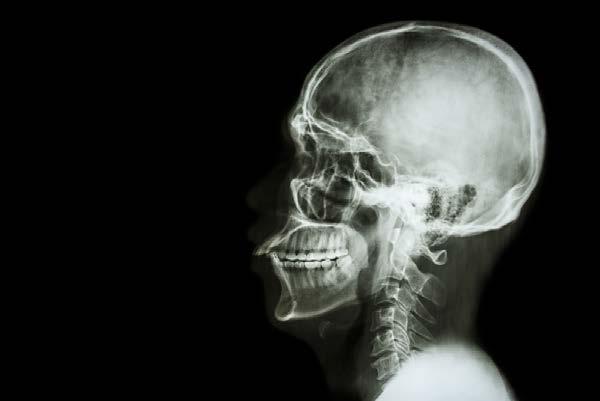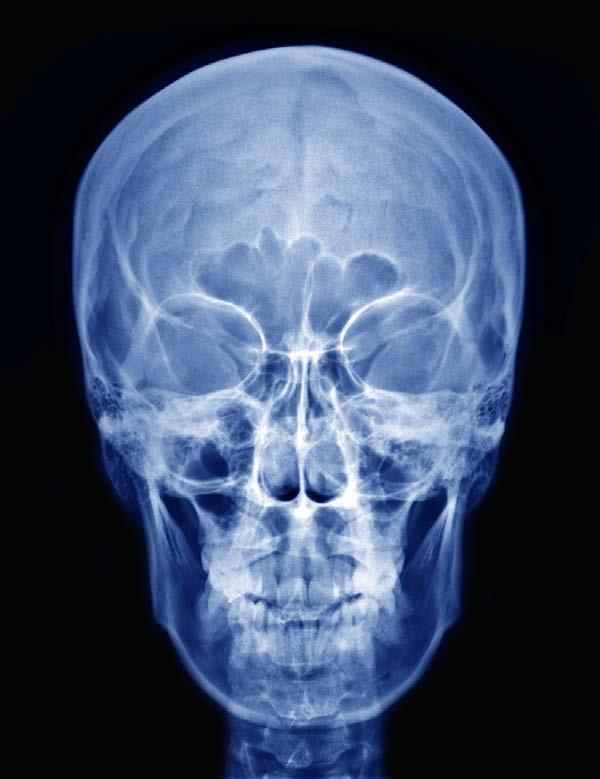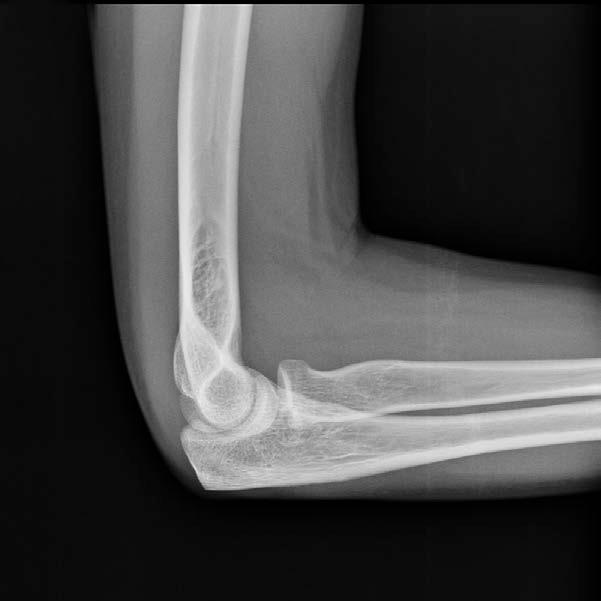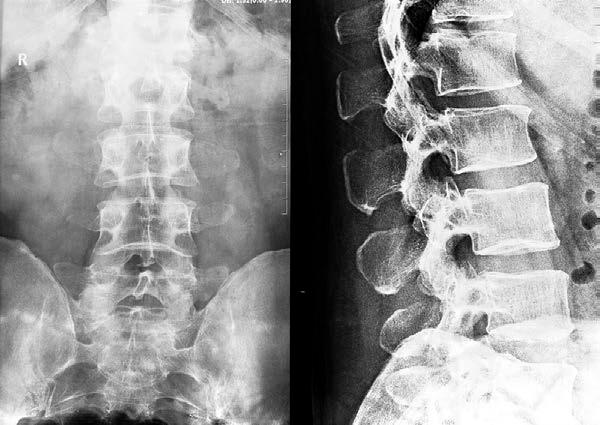patient for free air. A lateral decubitus film will detect these things as well in the patient who is not able to ambulate. In the lateral decubitus, the upper side of the abdomen should be seen in order to evaluate the patient for free air in the abdominal cavity. The AP erect is done on infants weighing up to fifteen pounds. The urinary tract can be evaluated with a plain film that includes images of the kidneys, ureters, and bladder. IV contrast is used to outline these structures in the supine patient. Images are obtained immediately after the injection and again after ten minutes. A final film is taken after the bladder is filled with contrast or about 25 minutes after the injection of contrast material. A lateral film is taken in late pregnancy in order to look for cephalopelvic disproportion in the patient with an arrest or possible obstruction of labor. It is used when an ultrasound cannot be performed. An AP or PA of the pelvis can also be obtained for this purpose.
SHOULDER FILMS A shoulder film is done to evaluate a person for fractures of the affected area, for shoulder dislocation, or for other bony abnormalities of the shoulder. Soft tissue problems, like calcifications of the rotator cuff muscles can be seen on a plain film of the shoulder. The standard image is of the AP shoulder that can be internally or externally rotated. Figure 7 shows a typical shoulder x-ray:
17







